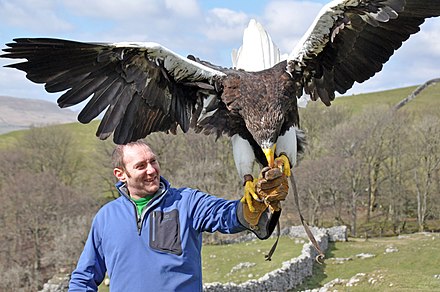Steller’s Sea Eagles, one of the largest eagle species in the world, are known for their impressive size and striking appearance. These majestic birds are found primarily in the eastern regions of Russia, with some migrating to Japan and Korea during the winter months. One of the most fascinating aspects of these eagles is their breeding and nesting behavior, particularly when it comes to the timing of their egg-laying.
Steller’s Sea Eagles’ Egg-Laying Season
Steller’s Sea Eagles typically lay their eggs between the months of April and May, with the exact timing varying slightly based on factors such as location and environmental conditions. The female eagles are responsible for incubating the eggs, which typically range from one to three in a single clutch.
The incubation period for Steller’s Sea Eagle eggs lasts between 40 to 45 days, during which time the female rarely leaves the nest. This dedicated parental care ensures the successful hatching of the eaglets.
Nest Building and Egg Laying
 Image source: stellers sea eagle
Image source: stellers sea eagle
Steller’s Sea Eagles are known for their impressive nesting habits. They construct their nests using a variety of materials, including twigs, sticks, and even seaweed. These nests are often built in tall trees or on rocky cliffs, providing a secure and elevated location for the eggs and chicks.
The female Steller’s Sea Eagle is responsible for laying the eggs, which are typically greenish-white in color. Once the eggs are laid, the female takes on the primary responsibility of incubating them, rarely leaving the nest during this critical period.
Chick Development and Fledging
After the eggs hatch, the Steller’s Sea Eagle chicks emerge with a soft, white downy plumage. This delicate feathering quickly transitions to a brownish-grey color as the eaglets grow and develop.
It takes approximately ten weeks for the Steller’s Sea Eagle chicks to fledge, or become capable of flight. This typically occurs around August or September, marking a significant milestone in the lives of these majestic birds.
Threats to Steller’s Sea Eagles
Despite their impressive size and strength, Steller’s Sea Eagles face a number of threats to their survival. Habitat alteration, logging, pollution, lead poisoning, and overfishing are all factors that can negatively impact these birds.
The International Union for Conservation of Nature (IUCN) has classified Steller’s Sea Eagles as “Vulnerable” to extinction, with an estimated population of less than 5,000 individuals. Conservation efforts are crucial to ensuring the long-term survival of this iconic species.
Conclusion
Steller’s Sea Eagles are truly remarkable birds, known for their impressive size, striking appearance, and fascinating breeding behaviors. By understanding the timing and details of their egg-laying season, we can better appreciate the unique adaptations and challenges faced by these majestic raptors.
As we continue to learn more about Steller’s Sea Eagles and their habitat, it is essential that we work to protect these incredible birds and ensure their survival for generations to come.

